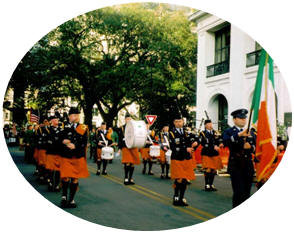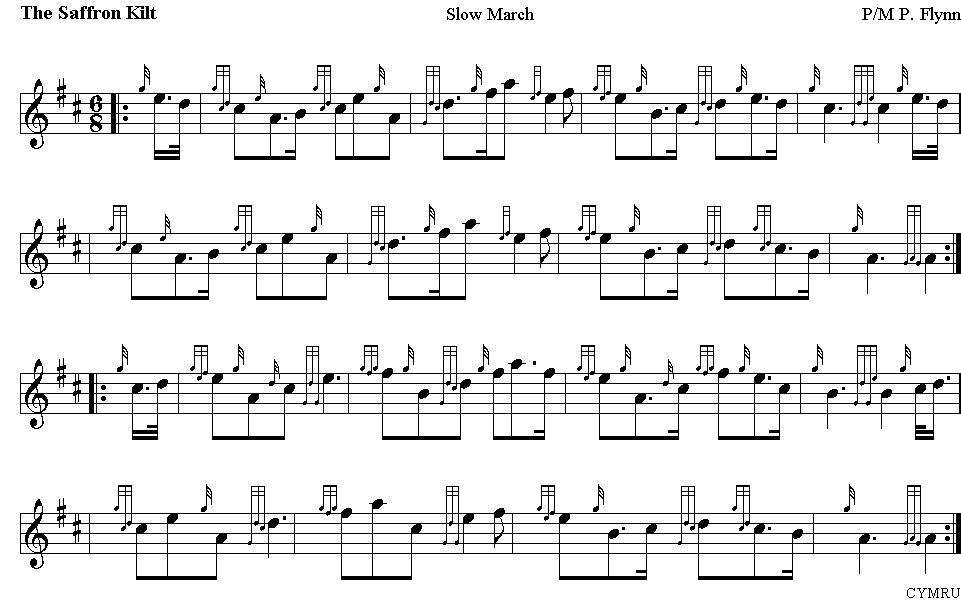 |
||

Best viewed in
|
In the late 19th and early 20th Century, Irish nationalists and enthusiasts sought to create (or recreate) a unique form of national dress for Ireland. The léine was deemed unsuitable, as it could not be "updated" to the fashions of the day, and many did not think it looked particularly "manly". Instead, they turned to their Gaelic cousins, the Scottish Highlanders, for inspiration. The Irish chose to adopt a solid-colored (or self-colored) kilt, dyed either green or saffron. When applied to worsted wool, the 'saffron' dye produced a much deeper color; the orange-brown shade we associate today with the saffron kilt. Solid-colored kilts were historically worn in Scotland as well, though they never seemed to attain the popularity that tartan or tweed did. In the first decade of the 20th Century, Patrick Pearse, revolutionary of the Easter Uprising and headmaster of St. Enda's school for boys, decided upon the saffron kilt for the school uniform. Whether he designed the kilt himself, had someone else design it, or merely based it upon what he had seen elsewhere is unknown. There is an example in existence in the former school (now the Pearse Museum) which has some peculiar differences with most kilts made then and today. Shortly thereafter, various Irish regiments of the British Army also adopted the saffron kilt for their pipers. These two occurrences are definitely coincidental, but display a curious historical paradox, given their opposing political positions. Irish dancers were also known to wear solid-colored kilts, though this garb has largely disappeared today due to Riverdance and the modern Irish dance phenomenon. There are also many Irish tartans, most are modern creations dating from the last few decades of the 20th Century. A few are clan or name-based, but most are district tartans. The House of Edgar has produced a line of Irish County tartans that have proven very popular for its warm and subtle shades. Marton Mills of England has also created a line of Irish County tartans. These tartans are based upon the colors of the various County Crests. Another research suggests that every Irish clan family had its own distinctive kilt color. Unlike the Scots with their different colored family tartans, Irish families had a preference for one-color kilts. The Irish clan system was, broadly speaking, similar to the Scottish – both countries were still and are inhabited by the Celtic race. Clan septs were of two classes: clansmen of the clan, who were related by blood and who formed separate branches of the clan; and those families who were related by marriage to other clan families. This was especially shown in the colors of the kilts. For example: one clan family wearing a red kilt and another family, living perhaps a hundred miles away, wearing a light red kilt, indicated a bond between both families.
|
|

